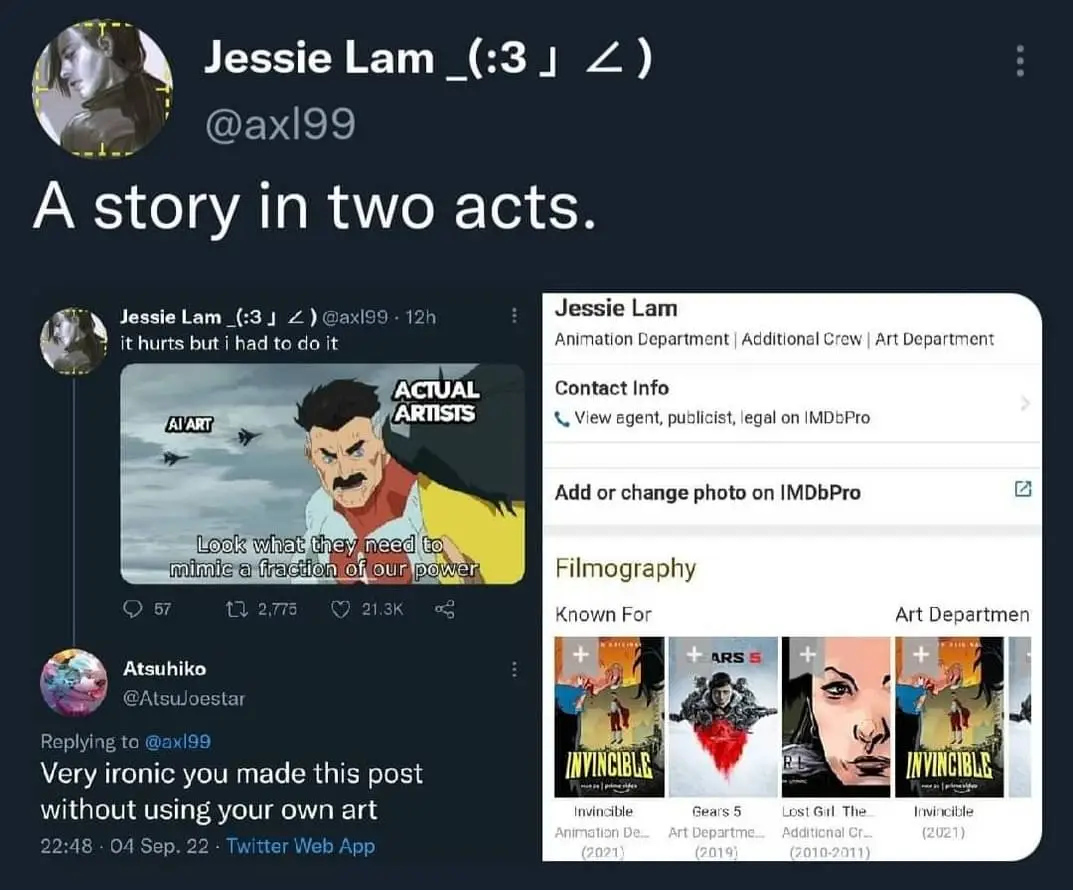AI Art
AI Art


AI Art


You're viewing part of a thread.
Netflix definition of anime includes shows like Castlevania, which some people do not consider anime. Its only a step back from japans definiton as it doesnt include all other kinds of animated work as to a japanese, Spongebob for example would be considered anime.
Yeah, now that I see what’s included in the catalog it is pretty weird, but how is that relevant in Edgerunners’s reception in Japan and/or outside?
How people consume media on said platform and all platform affects rankings. The average japanes person watches anime off local network like ATX, Tokyo MX and such, which devalues some anime on atreaming aites in japan, unless they are exclusive. This is not the case for other regions where having a channel with a lot of anime options is not really a thing, so everyone is primarily watching it via streaming. This then gives more viewership to mainstream anime because the tv option is no longer/was never viable, thus mainstrean anime float up rankings in outside media. But sink in japan because theyre watching it elsewhere.
But none of the series in the US top 10 for those three weeks were anime (or animated at all).
Meanwhile in Japan, LycoReco and Spy x Family still went well on streaming services even if they already passed on TV (even there, a lot of people prefer watching stuff on streaming to having to schedule your day in order to watch tv programs at a specific hour).
In particular with Spy x Family, it had a broader appeal, and was not limited to just anime fans. Its of the few shows that were watched universally by japanese audiences. So habits of watching it on tv werent necessarily done by those users. Very very few shows reach that benchmark
That’s true… but I still don’t get how this would support the fact that Edgerunners didn’t do well in Japan. Because it did, even in relation to other, more Japanese-tailored Netflix exclusives like Kotaro lives Alone or Romantic Killer.
Its not that edrunners didnt do well in japan, its just that the shows target audience wasnt initially japanese or pitched in a way that they were expecting a lot of japanese people to watch it. Having japanese is something tagged on due to the game supporting several languages, and it being worked on by studio trigger, who already has a history of working with western companies who do projects like these.
Studio trigger on its own brings a lot of specific people to watch their show, regardless of target audience. Its of the few studios to get people who "hate mecha, but actually has almost never gave mecha a shot in the first place" to watch mecha (via indirectly with TTGL, or Directly via Darling in the Franx, or Promare). Its this audience on why they had also included japanese dub because some of that audience has some pretty strong opinions on dub vs sub, even though realistically speaking, japanese dub would only make sense if all the characters were from the Westbrook district of Night City.
And they were expecting Japanese people to watch it exactly because Trigger is a popular name in Japan too (and because CP2077 was eagerly awaited there as well).
I think the difference between Edgerunners and stuff like BTAS is pretty clear (not to mention Sunrise and TMS only worked on a small selection of BTAS episodes from what I’m reading, the large majority was produced in the US)
Its the time period. Various 90s and some early 2000s shows used japanese animators to animate the show. Xmen Evolution used Japanese/Korean talent to animate it.
Mook animation was one of the major studios who were japanese and animated several shows in the 90s/early 2000s.
But again, one thing is using Japanese animators in an American production, and another is an entirely Japanese production that just has a distinct western influence. Most of those shows didn’t even get broadcast in Japan later. I think the difference with Edgerunners is still pretty clear.
The definiton never states that the producers had to be japanese, and is rarely what people say about what constitutes what is and isnt anime. That's why the western definition is a super bastardized term, as there is no concensus about the definition, even between companies, and the ONLY consistent definition is the japanese one
Arguing wether production matters is the argument of which is more inportant for item production, who designed it who produced said object (e.g Apple is an american company, but not all people agree that an iphone is "made in america")